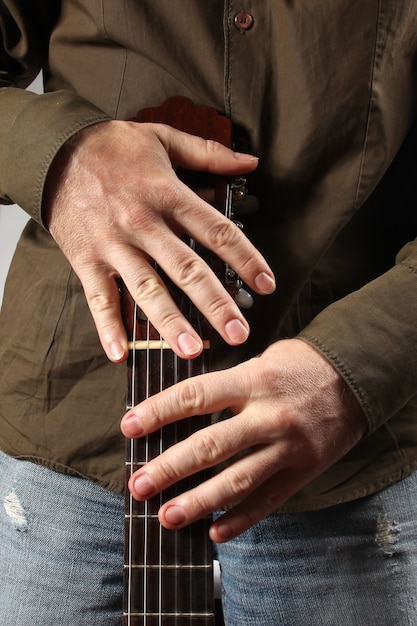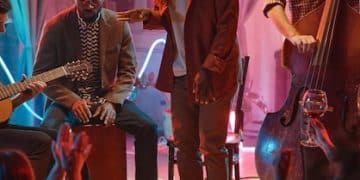Supreme Court to Review Music Copyright Case: Potential Outcomes

Breaking: Supreme Court to Hear Case on Music Copyright Infringement – What Are the Potential Outcomes? This legal battle could redefine the boundaries of music copyright law, impacting artists, publishers, and consumers alike. The decision made could reshape future copyright litigation related to music.
The Supreme Court is set to hear a pivotal case concerning music copyright infringement, raising critical questions about the line between inspiration and violation. This landmark decision could dramatically affect the music industry. Breaking: Supreme Court to Hear Case on Music Copyright Infringement – What Are the Potential Outcomes? is a question that could affect many individuals.
The Core of the Copyright Dispute
At the heart of the matter lies the complex issue of musical copyright, specifically what constitutes infringement. Copyright law aims to protect the rights of creators, but it also allows for creativity and progress by allowing interpretations and inspiration.
This case challenges the established understanding by asking the Supreme Court to clarify when a piece of music crosses the line and becomes a violation of another artist’s copyright. The decision turns on nuances as subtle as the arrangement of notes and the vibe of the song.

The Legal Framework
Understanding the legal precedents governing copyright infringement is crucial. Copyright law, as defined under the Copyright Act, grants exclusive rights to copyright holders, including the right to reproduce, distribute, and create derivative works from their original works. These rights aim to protect the artistic and financial interests of creators.
However, these rights are not absolute. The law also acknowledges the importance of fostering creativity and innovation, allowing for the ‘fair use’ of copyrighted material under certain circumstances. This balance ensures that copyright protection does not stifle artistic expression or limit free exchange of ideas.
- Originality: The music must be original to the copyright claimant.
- Substantial Similarity: The copy needs to be verifiably similar to the original.
- Access: The alleged infringer needs access to the original copyrighted work.
In summary, copyright law seeks to strike a delicate balance between protecting the rights of creators and promoting artistic and intellectual freedom. The details in question in this case may affect that balance.
Key Arguments Before the Court
The arguments presented before the Supreme Court are expected to revolve around several key principles. Both sides will likely emphasize the aspects of copyright law they believe support their case.
The plaintiffs will aim to demonstrate clear and substantial similarities between their music and the allegedly infringing work, focusing on elements such as melody, harmony, and rhythm to prove copyright violation.
The Defense Strategies
The defense will likely argue that any similarities are coincidental, minimal, or fall under fair use. They might present evidence of independent creation, meaning they developed the music without direct influence from the original work. This angle protects artists who have similar melodies coincidentally.
Another defense could be that the elements in question are not original or are common musical tropes. The use of expert witnesses could also play a crucial role, as musicologists dissect the compositions to highlight distinct features or commonalities. These efforts inform a ruling.

- Fair Use: Arguing the usage falls under acceptable legal parameters.
- Independent Creation: Proving the work was created separately without influence.
- Lack of Originality: Asserting that the infringed upon parts are not unique to the claimant.
Ultimately, the Supreme Court will weigh these arguments to determine whether the alleged infringement constitutes a violation of copyright law and threatens the creative integrity of the plaintiffs music.
Potential Outcomes and Ramifications
The Supreme Court’s decision in this music copyright case could lead to several different outcomes, each with significant ramifications for the music industry. Its judgment could either reinforce existing copyright protections or establish new precedents that alter how copyright law is applied to music.
A ruling in favor of the plaintiffs could strengthen copyright protections, making it easier for copyright holders to pursue infringement claims. A ruling in favor of the defense could raise the bar for proving infringement, providing more leeway for artists to draw inspiration from existing works without fear of legal repercussions.
Impact on the Music Industry
The music industry is known for adapting to legal and technological challenges, and this copyright infringement case will affect that adaptability. Depending on the court’s decision, artists, publishers, and consumers may experience shifts in approach to copyright.
Increased uncertainty could heighten litigiousness within the industry, affecting creativity. Alternatively, a ruling that favors broader creative freedom could foster more experimentation and collaboration, enriching the musical landscape.
Ultimately, the Supreme Court’s decision will prompt significant adjustments in how music is created, licensed, and protected, shaping the industry.
Expert Opinions on the Case
Legal scholars and music industry experts have offered diverse opinions on the potential outcomes of this landmark case. Some experts emphasize the need to protect artists’ rights and prevent unauthorized exploitation of their creative works.
They argue that strong copyright protections are essential for fostering innovation and ensuring that artists are fairly compensated for their creations. These experts worry a decision against current laws would devalue the music creation process.
Balancing Creator Rights with Creative Freedom
Conversely, others argue for a more lenient approach to copyright, emphasizing the importance of creative freedom and the limitations that strict copyright enforcement can impose on artistic expression. The question is whether the existing laws are balanced fairly.
These experts suggest that overzealous enforcement of copyright can stifle creativity by discouraging artists from building upon existing works or remixing common musical elements. Creative freedom enhances collaborative art and innovation, and legal experts are keen to see it considered.
- Protection of artist rights: A need to provide artists with the ability to enforce copyright.
- Impact on creative freedom: A need to promote an environment of freedom in music.
- Reactions from legal perspectives: A legal breakdown of the ruling and how it applies to other artforms.
The Supreme Court’s decision will need to carefully weigh these competing considerations, balancing the need to protect artists’ rights and ensure economic viability with the desire to promote artistic innovation and cultural exchange.
Historical Context of Copyright Law
The history of copyright law in the United States provides a valuable context for understanding the current debate over music copyright infringement. Copyright law has evolved significantly over time, adapting to technological advancements and shifting societal attitudes toward intellectual property.
From its origins in the late 18th century, copyright law has aimed to promote the progress of science and the useful arts by granting authors and inventors exclusive rights to their creations for a limited time. As technology reshapes the world, copyright seeks to adapt.
Landmark Copyright Cases
Throughout the years, numerous landmark copyright cases have shaped the interpretation and application of copyright law, setting precedents that continue to influence legal decisions today. These include cases involving fair use, sampling, and digital rights, illustrating the complexities in protecting copyright.
Examining these historical cases can offer insights into the legal, social, and technological factors that have shaped copyright law. With streaming and independent artists rising, the Supreme Court is in a position to influence the creative economy signicantly.
- Technological Advancement: A need to adapt to digital media.
- Legislative Acts: How acts can address loopholes in outdated legal perspectives.
- Societal Impact: How technology changes the role creativity plays in public life.
Understanding the historical context of copyright law is essential for assessing the potential impact of the Supreme Court’s decision on the music industry and the broader creative landscape.
Public Reaction and Media Coverage
The Supreme Court’s decision on music copyright infringement will undoubtedly generate significant public reaction and media coverage. Expect discussions across social media, news outlets, and industry publications, as people analyze the implications of the ruling.
The outcome will be of interest to artists, publishers, consumers, and legal experts and will shape the discussion around the future of copyright. Coverage and reactions may shape public sentiment and even influence future legal and legislative actions related to copyright.
Social Media and Industry Outlets
Social media platforms are the quickest route to gauge public reactions. Industry publications, blogs, and forums will offer in-depth analysis and commentary on the decision. These sources may highlight aspects of the ruling or the impact on legal precedent.
The music industry may also see petitions, campaigns, or advocacy efforts aimed at influencing legislators and policymakers. A push for legislative action might result to further define the balance between copyright protection and creative freedom.
This combination of public, media, and industry responses will play a significant role in shaping the narrative surrounding the Supreme Court’s decision.
| Key Point | Brief Description |
|---|---|
| ⚖️ Copyright Law | Protects creators’ rights, but allows interpretations. |
| 📢 Arguments | Focus similarity vs. coincidental or fair use. |
| 🎵 Industry Impact | Ruling could increase litigiousness or foster creativity. |
| 📜 Historical Cases | Legal, social, and technological precedent. |
FAQ
Music copyright infringement occurs when someone uses a copyrighted musical work without permission from the copyright holder. This includes unauthorized copying, distribution, or creation of derivative works.
The court looks at the similarity between the original work and the copy, the alleged infringer’s access to the original work, and whether the use falls under fair use of copyright law.
The decision affects the music industry overall. It includes artists, music publishers, and record labels as well as consumers, legal experts, and policymakers related to digital rights.
The case will change the way derivative work is construed. Based on whether the courts side with the plaintiff or the defendant, artists may need to take greater steps to adhere to established copyright laws.
Fair use permits limited use of copyrighted material without permission for purposes such as criticism, comment, news reporting, teaching, scholarship, or research. The use should not significantly harm the market position of the copyright owner.
Conclusion
As the Supreme Court prepares to hear arguments in this music copyright case, the music industry awaits a decision that could reshape the landscape of copyright law. Balancing the rights of creators with the importance of fostering creativity, the decision will set precedents that will affect artists, publishers, and consumers for years to come.





